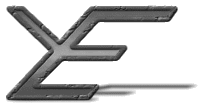The read servlet is the most transparent of all the servlets to the user. The user accesses web pages through the read servlet, as if they were real static documents available from the web server, with just the name of the servlet before the request. For example the URL to access the web page "/scratch/" (or "/scratch/index.html") would be: http://www.YEdit.com/servlets/Read/scratch/ (or http://www.YEdit.com/servlets/Read/scratch/index.html). This activates the servlet "Read" in the "/servlets" directory of the server "http://www.YEdit.com/".
When the web server receives this request (assuming the web server accesses servlets through the "/servlets" directory, and there is a "Read" servlet present in the servlet directory), it passes the request through the servlet engine, to the servlet (or servlet alias) that is called "Read". From here, if the servlet has not been started (or if the servlet has changed since it was last called), it is loaded/reloaded and initialised, and then the request is passed on to it. The servlet looks at the parameters that it has been called with (one of which is the path information, that contains the string "/scratch/" or "/scratch/index.html"), and then works out the name of the file that it needs to read in order to satisfy this request. The servlet looks up any path information that needs to be pre-pended to the path information that was passed when the servlet was run, and constructs the full path for the file to be accessed (and adds "index.html" to the end, if the requested path is a directory). The servlet then creates an object that points to this file (whether it is in the file system, a database, or elsewhere). This object has been named for the sake of convenience an USL. An USL (Universal Stream Locator) is a name that has been given to an object that provides information on how to locate a source of information, such as a database, a file, a web page, etc. It is similar to an URL, but can contain any information to access an object, is completely system independent, does not rely on the pointing information being a string, and does not assume any particular method of access. The USL is then passed to the middle interface, which locates and returns the correct class to access the file (currently based on the initialisation file), and then uses that class to access the file and to read the latest version of the file. The read servlet then returns the web page to the user, as if it had been accessed directly. In the future, the read servlet may not be required, as when the edit servlet updates a file, it may also store the file in a directory that is directly accessible by the web server, thereby removing most of the need for a read servlet.
| Previous: | 4.06 User Interface |
| Next: | 4.08 UI: Browse servlet |
